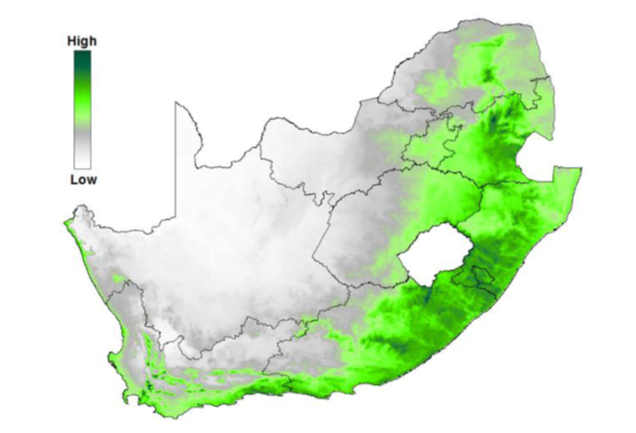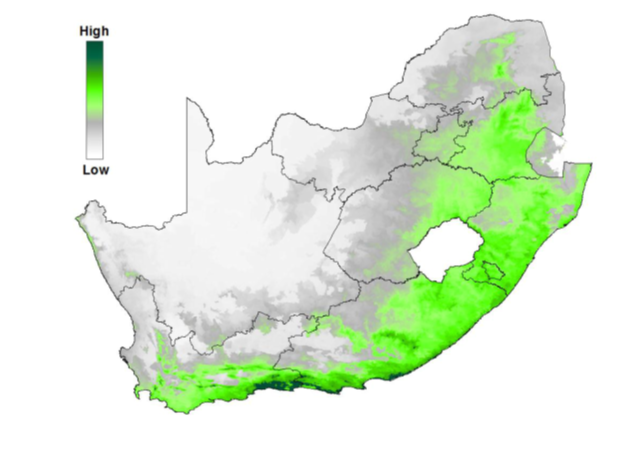Discipline: environment;
Current climate change projections indicate an increase in average temperature of 1.5 ºC to 2 ºC towards 2050, with higher increases expected in the interior and lower at the coastal seaboard due to the moderating effect of the sea. These higher temperatures may result in heat stress in dairy cattle, which cannot be counteracted by behavioural adaptation. High producing dairy cows in the interior of the country may be more vulnerable as they may be affected more frequently by heat stress, whereas those on the pasture systems of the south-eastern seaboard may be affected less frequently due to the lower expected temperature increase. This is a fair postulate if heat stress results only from an increase in temperature. It does not, as humidity contributes substantially. Therefore, the researchers referenced below decided to investigate this further by modelling the likely temperature-humidity changes as they would likely affect the future geographical distribution of pasture-based systems. The objective of their study was to use present milk production data of Holstein dairy herds on pasture, together with climatic variables related to heat stress, to model geographical areas for optimal milk production under present and future climatic scenarios.
The authors selected 13 relatively high producing Holstein herds (6 600 to 10 350 kg per lactation) from a total of 37 farms distributed across the south and eastern seaboard. They modified a well-known model to predict the influence of various contributing factors with the temperature-humidity index as heat stress indicator as core. Eight potentially relevant climate variables were considered in the model: solar radiation, mean relative humidity, mean annual temperature, temperature range, extremes of maximum temperature, summer heat units, potential evaporation and mean annual precipitation.
The results showed that only three of the eight climate variables made significant contributions to the model, namely evaporation rate, relative humidity and mean annual temperature. The modelling technique both predicted the geographical influence of heat stress on milk production and reconstruct the relationship in sites where no data were available satisfactorily. The modelled map reproduced optimal milk production areas in the eastern parts of South Africa as present which correlates well with the current geographical influence of heat stress as represented by the temperature humidity index for the country. This is shown in the first map below. For the future climate change projections (2046–2065), the predicted optimal milk-producing areas may shrink progressively, the geographical shift is towards the southern parts of the south-eastern coastal belt (second map).
Reference:
R. Williams, M. M. Scholtz & F. W. C. Neser, 2017. Geographical influence of heat stress on milk production of Holstein dairy cattle on pasture in South Africa under current and future climatic conditions. S.A. J. Anim. Sci. 46, 441 – 447.


